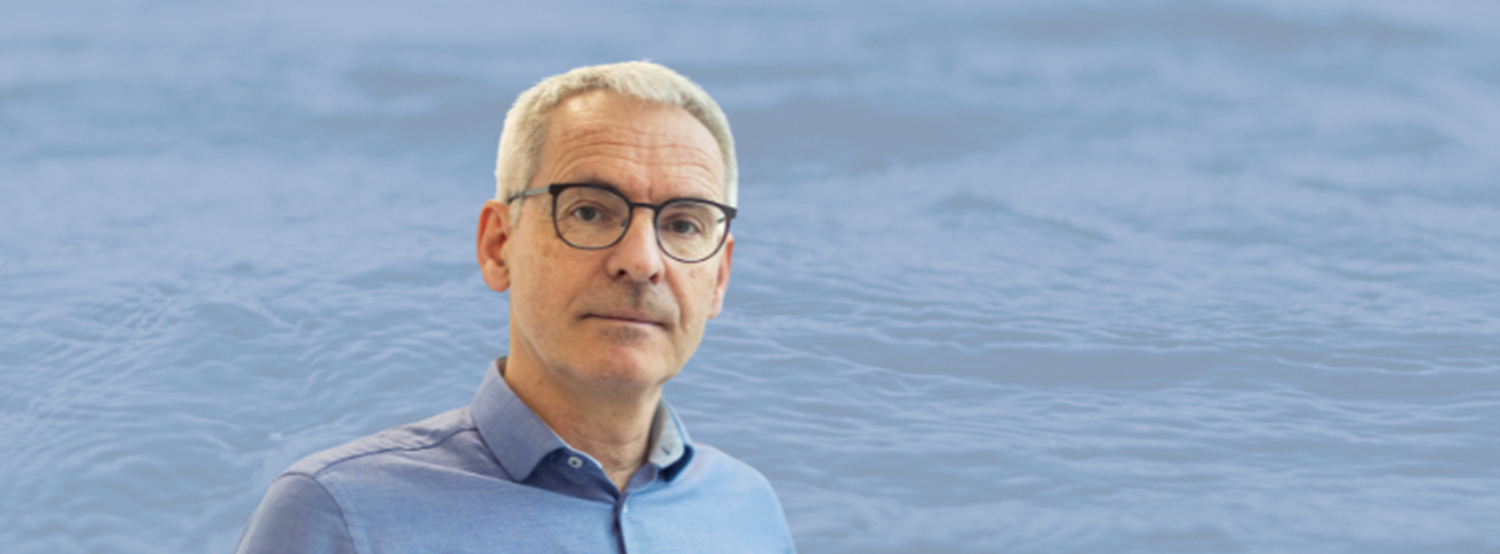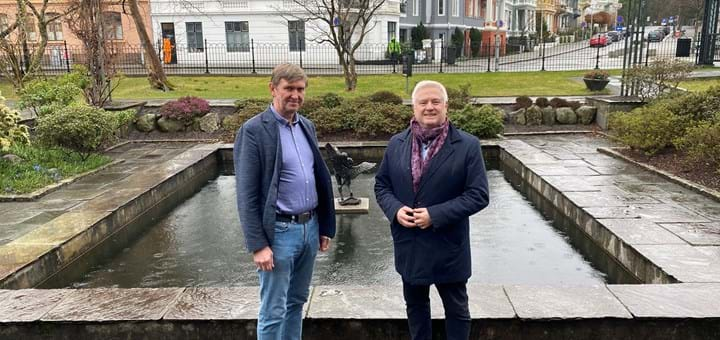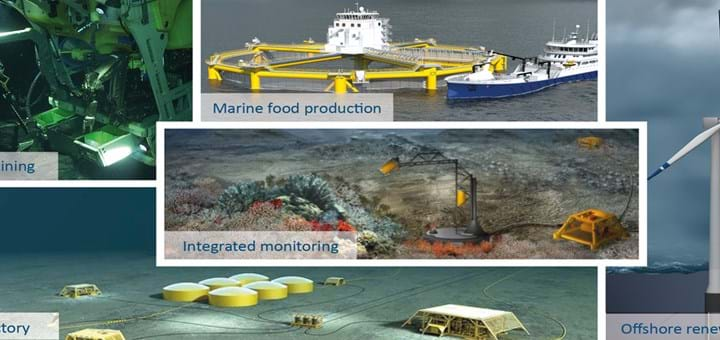Data from ocean to cloud

There are vast requirements for real-time data transfer from below the surface to the “cloud”. As data communication in water is very demanding, a whole new approach and smarter devices are required, which is what the SFI Smart Ocean centre sets out to do according to the new centre director Ingvar Henne.
There is a clear expectation that all sensors and control systems should have connectivity so that we have instant access to measurement data and the ability to remotely control systems in real-time.
This applies even to sensors and systems underwater, but wireless communication is a particular challenge in this context. Therefore, an underwater network must be designed with completely different framework conditions than a network above water.
– There are many exciting challenges here, both for physical transmission between devices and for data management in the network, says Ingvar Henne who is the new director of the SFI Smart Ocean, a centre for research-based innovation, working to develop underwater wireless communication solutions for the benefit of science and industry.
– Western Norway has one of the world's strongest environments within marine research and ocean industries, so we are definitely in the right place, says Henne.
Been there since the beginning
Henne was present when the idea of a centre for a “smart ocean” was conceived under a gathering organised by GCE Ocean Technology.
He was thereafter involved in the application process that resulted in a successful application rewarded with 96 mill. NOK and SFI status by the Research Council of Norway in 2020. He has also contributed to several work packages as well as served on the centre’s Technical Advisory Committee.
SFI Smart Ocean has partners from both industry and research institutions as well as public authorities, and the work is aimed at user groups within three main areas:
- Ocean environment
- Ocean industry; mainly offshore wind, the petroleum industry and aquaculture
- Society and administration

Photo: Vice-Rector Gottfried Greve performed a symbolic cable cutting in the French way, with a guillotine made especially for the occasion at SFI Smart Oceans first physical gathering at the Norwegian Ocean Observation Laboratory. This, symbolising moving into wireless solutions for smart ocean monitoring. Photo/ill.: Randi H Eilertsen, UiB
Need more end users
To establish an even stronger connection between the centre's activities and specific needs, SFI Smart Ocean is seeking more end-users. They have ongoing dialogues with potential partners for cooperation and initiatives for new related activities.
Interested parties are invited to two workshops in Bergen and Agder, in collaboration with GCE Ocean Technology, GCE NODE and SFI Offshore Mechatronics, to exchange ideas for new innovations and research activities in the two regions.
The Bergen workshop will leverage the combined expertise of industry partners and members from both SFI Smart Ocean and GCE Ocean Technology, respectively.
Read more and register for workshop in Bergen 31 August

Photo: Rigs with sensors are placed in the ocean at IMR’s research station in Austevoll as part of the SFI Project (Internet of the Ocean). Photo: Jean-Baptiste Danre / IMR.
Collaboration and trust is essential
Henne emphasizes the significance of aligning the centre's activities with the partners' strategies and priorities.
– The centre is driven by their efforts, he says. – A close dialogue is critical to match the centre’s plans with the partners’ requirements, contributions and availabilities, ensuring that it is part of the partners’ core strategy.
The centre comprises six research partners, nine companies, clusters and national authorities.
– It is crucial that the centre becomes a catalyst for these partners to use their expertise in joint activities so that together we can unleash a greater potential than each partner can achieve alone, says Henne. Therefore, it is important to facilitate an open and good dialogue between partners that builds trust, engagement, and conviction that participation in the centre is valuable for all partners.
Gaining a competitive edge
SFI Smart Ocean places significant emphasis on ensuring data quality concerning sensors as a data source, network communication, and storage and dissemination of data in the cloud. The centre prioritizes stationary devices with low power consumption for long operational periods, with an overall measurement strategy and data flow in the network being critical topics.
– There are several centres’ that overlap with us on individual topics, but I believe that the centre’ s approach is unique and a good starting point for the development of related projects that can delve deeper into issues for the optimization of individual processes that are part of an overarching data flow, says Henne.
Contributing to a sustainable ocean
More than 70% of the Earth's surface is covered by oceans, and this is the least explored part of our planet. Nonetheless, the ocean is extremely important for the climate and as a resource for energy, food, and minerals.
– If we are to ensure sustainable use of the ocean's resources, we must manage them based on the best possible knowledge of the ocean.
Good and comprehensive observations from smart sensor networks are therefore an important foundation for increased understanding and wise decision-making, says Ingvar.
– The results from SFI Smart Ocean can contribute to reducing the environmental and climate footprint and lowering the risk of both monitoring and resource utilization, he explains.
– I am really looking forward to collaborating with all the skilled professionals in the centre, and connecting with even more possible partners and professional environments, he ends.
Contact Information


About
SFI Smart Ocean is a centre for research-based innovation, hosted by the Department of Physics and Technology at the University of Bergen.
They are creating a wireless, smart, low power sensor network providing data for fact-based and sustainable management of the ocean resources and industrial equipment and structures.
Related Events
GCE Ocean Technology Events
Other events


